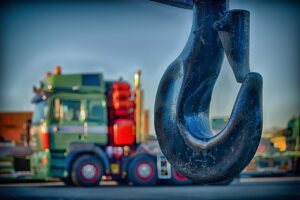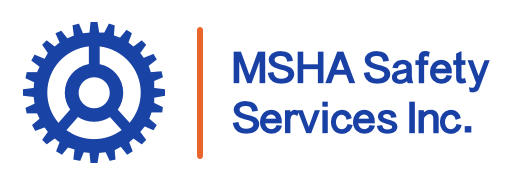When we think about safety in mining, it’s easy to overlook the role of mine safety officers and skip right to the procedures and training to be done. These dedicated professionals protect miners and ensure that mining operations run smoothly and comply with regulations.
In this article, we’ll delve into the responsibilities of a mine safety officer, the importance of their role, the qualifications needed, and the career opportunities available. Whether you’re looking to become a mine safety officer yourself or just trying to gain a better perspective of the mine inspection process, you’ll learn how these safety experts contribute to the mining industry and why they are crucial for both safety and efficiency.
The Importance of a Mine Safety Officer
Protecting lives is number one priority for a mine safety officer. They’re responsible for conducting thorough safety inspections of underground and surface mines. Their work helps to prevent accidents and ensures that miners work in a safe environment. By developing and implementing safety protocols, they create a framework that reduces the risk of incidents. In short, this role is not just about enforcing rules; it’s about fostering a culture of safety and well-being.
A mine safety officer also ensures legal compliance by making sure that mining operations adhere to regulations. This includes overseeing proper maintenance and usage of mining equipment. Their vigilance helps to avoid costly fines and shutdowns that can arise from non-compliance. Moreover, their efforts boost productivity by minimizing disruptions caused by accidents or safety violations.
A mine safety officer’s main job responsibilities include:
- Conducting Safety Inspections: Regularly inspecting the mine site, equipment, and operations to identify potential hazards and ensure compliance with safety regulations.
- Enforcing Compliance: Ensuring that all activities adhere to MSHA regulations and other relevant safety standards. This includes monitoring daily operations and implementing corrective actions when necessary.
- Developing and Implementing Safety Programs: Creating and executing safety plans, policies, and procedures to minimize risks and promote a safe working environment.
- Training and Educating Workers: Providing ongoing safety training for miners, including emergency response, hazard recognition, and the proper use of personal protective equipment (PPE).
- Investigating Accidents and Incidents: Leading investigations into any accidents, near-misses, or safety violations to determine the root cause and prevent future occurrences.
- Reporting and Documentation: Maintaining accurate records of inspections, training sessions, incidents, and compliance activities to ensure transparency and accountability.
- Emergency Response Planning: Preparing and coordinating emergency response plans, including evacuation procedures and first aid measures, to be ready in case of an accident or disaster.
- Collaborating with Management and Regulatory Bodies: Working closely with mine management, MSHA officials, and other regulatory agencies to ensure that safety practices are up-to-date and fully compliant.
- Risk Assessment: Continuously assessing and analyzing potential risks within the mining operation and recommending improvements to mitigate those risks.
- Promoting a Safety Culture: Encouraging a workplace culture where safety is a shared responsibility, and all employees are committed to maintaining a safe working environment.
Qualifications Needed to Become a Mine Safety Officer
To become a mine safety officer, certain certifications and skills are necessary. Certification programs often include training in occupational safety and health, mining safety, and emergency response. These programs equip individuals with the knowledge needed to handle various safety issues in mining environments.
In addition to certifications, a successful mine safety officer must possess strong analytical skills and attention to detail. They need to be adept at assessing risks and developing effective safety measures. Effective communication is also essential, as they must convey safety protocols and training to miners and other staff.
Career Opportunities and Salary
The role of a mine safety officer offers a range of career opportunities and competitive salaries. In fact, job stability is a significant advantage, as mining operations are continuous and require constant safety oversight. The role is also rewarding and fulfilling, as mine safety officers make a tangible difference in the safety and well-being of others.
When it comes to career advancement, it’s possible to specialize in areas like hazard assessment or safety management. Opportunities for career advancement allow mine safety officers to grow within the industry and potentially move into higher-level positions or consulting roles.

High-Pressure Environment with Significant Responsibility
While becoming a mine safety officer can be very rewarding, working as one involves navigating a high-pressure environment due to the exposure to hazardous working conditions and the weight of responsibility. The role requires individuals to be resilient and capable of handling stressful situations effectively. This environment demands continuous education to stay current with ever-evolving regulations and safety practices.
The responsibility of ensuring safety in such a challenging setting underscores the importance of ongoing training and staying informed about industry standards. Continuous education helps mine safety officers adapt to new technologies and safety protocols, ensuring they remain effective in their roles.
Understanding the Role of a Mine Safety Officer
In summation, a mine safety officer wears many hats and plays a crucial role in keeping mine sites safe. By conducting safety inspections, developing safety protocols, and ensuring compliance with regulations, these professionals are essential in protecting lives and maintaining operational efficiency. The necessary qualifications and high-pressure nature of their work highlight the importance and complexity of their role.

